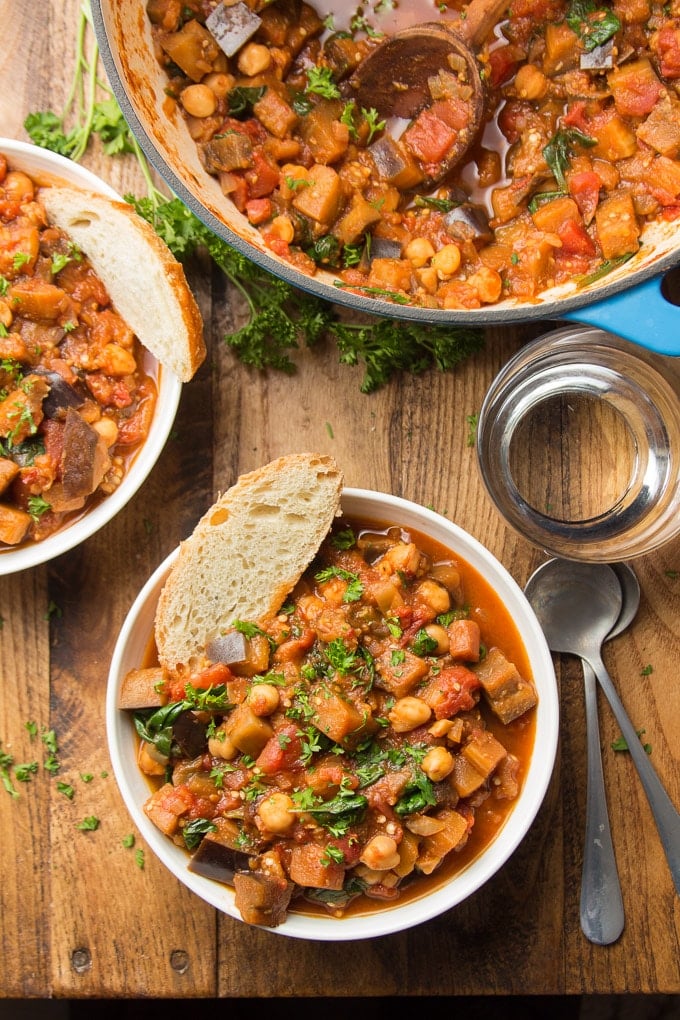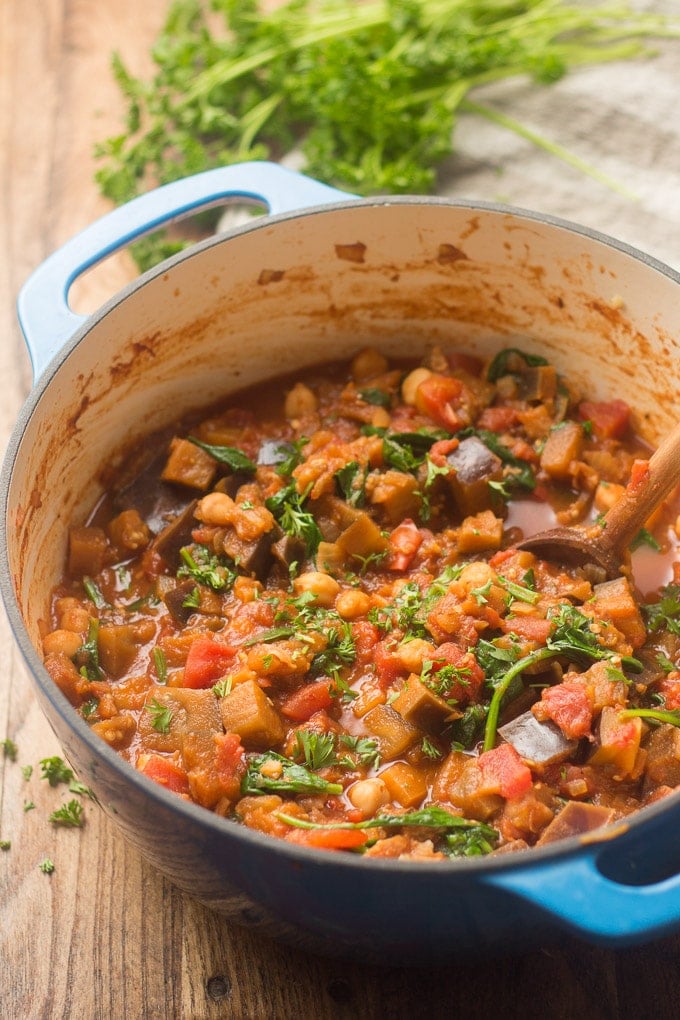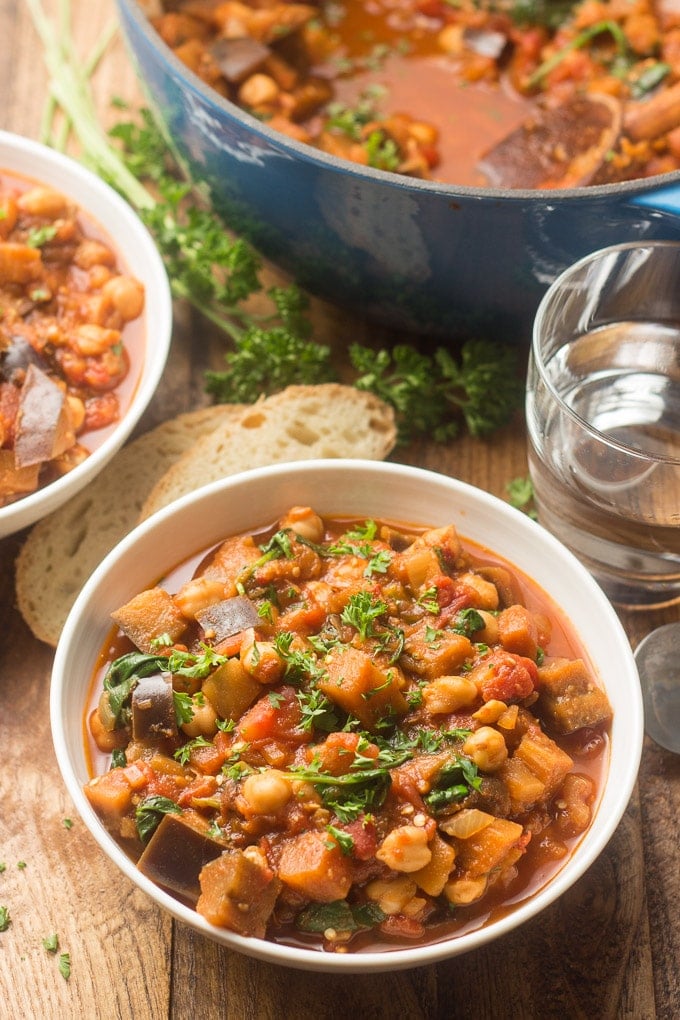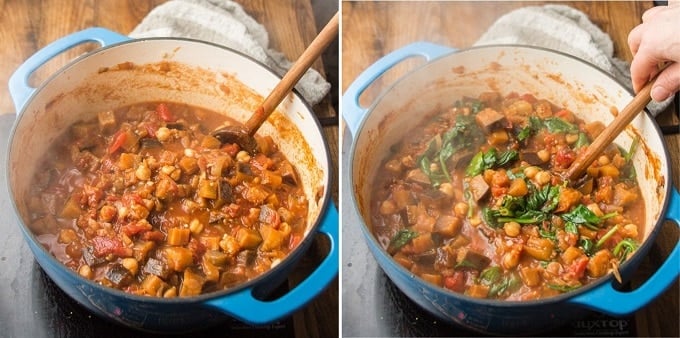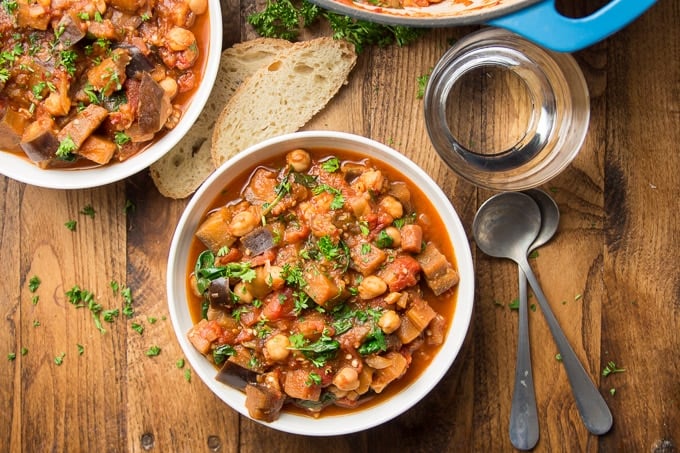If this winter had a theme as far as my recipes are concerned, it would have to be stews. I always crave a big hearty bowl of vegan stew when it’s cold outside, and this year I didn’t hold back, between the lentil stew, chickpea stew, and portobello “beef” stew. I’m not quite ready for winter to be over yet, so I’m sharing yet another stew recipe, this time starring eggplant! (Oh, and the above-mentioned recipes aren’t enough to satisfy your stew cravings, be sure to check out this massive collection of vegan stews I put together a while back).
Tips for Cooking with Eggplant
Eggplant is kind of a funny vegetable. It’s a little tricky to get it right, but let me tell you, when you do get it right, it’s pretty darn irresistible. I have a few tactics I stick with!
Choosing an Eggplant
Make sure to choose an eggplant that’s ripe, but not past its prime. The skin should be shiny and it should feel pretty firm, with just a little bit of softness (but not squishiness) starting to develop. I always go for smaller eggplants, when available, as opposed to larger. Larger eggplants have more seeds and are more prone to bitterness. Most eggplant varieties are interchangeable in recipes like this one. The classic Italian globe eggplant is my go-to for this type of dish.
Salting Eggplant
There’s a myth that you always need to salt your eggplant. Not true! You really only need to salt your eggplant if it’s a bit past its prime or shows some browning when you cut it open. In these instances, salting will remove any bitterness that has developed. If you don’t know how to go about salting your eggplant, try this method.
Oil
Eggplant soaks up oil like crazy when you cook it, which is why most eggplant recipes call for a generous amount of oil. Can you cook eggplant oil free? Sure, but you’ll need to watch very closely for burning, and you’ll never get the same tender, melt-in-your mouth texture that you would with oil.
How to Make Eggplant Stew
Start by heating up some oil in a large pot. Add diced eggplant and onion. Give everything a stir to coat the eggplant evenly with the oil. The eggplant will take up a lot of space in the pot, but don’t worry! I’ll cook down. Watch the pot closely and stir it often to avoid burning. Now add some garlic and spices: cumin, coriander, paprika, and red pepper flakes. Cook everything for about a minute. Next you can add some broth, followed by vegetable broth, chickpeas, tomatoes, and tomato paste.
Raise the heat and bring the stew up to a simmer. Let it cook for a while, until it’s nice and thick, and the eggplant is super tender. Add a handful of spinach when the stew is just about done simmering. Let it cook for a few more minutes to wilt the greens.
Take the pot off of the burner and season your stew with some salt and pepper. You can also add more red pepper flakes for an extra kick, if you like! This stew is perfect with a slice of crusty bread!
Leftovers of this stew keep great. Store them in a sealed container in the fridge for up to 3 days, or in the freezer for 3 months. Is this stew gluten-free? It is! Is this stew spicy? It has a tiny bit of heat, thanks to the red pepper flakes. For a milder stew, leave them out. For more heat, use extra! Can I make this stew oil-free? You probably can by substituting water for the oil. But be very careful to avoid burning the eggplant. Also keep in mind that the texture of the eggplant may not be quite as tender if you cook it without oil. Feel free to substitute your favorite beans or greens. Not into chickpeas? Try cooked lentils or cannellini beans. Don’t like spinach? Chard or kale would be excellent (but may take a bit longer to cook).
Like this recipe? If so, be sure to follow me on Facebook, Pinterest or Instagram, or subscribe to my newsletter. And please stop back and leave me a review and rating below if you make it!
